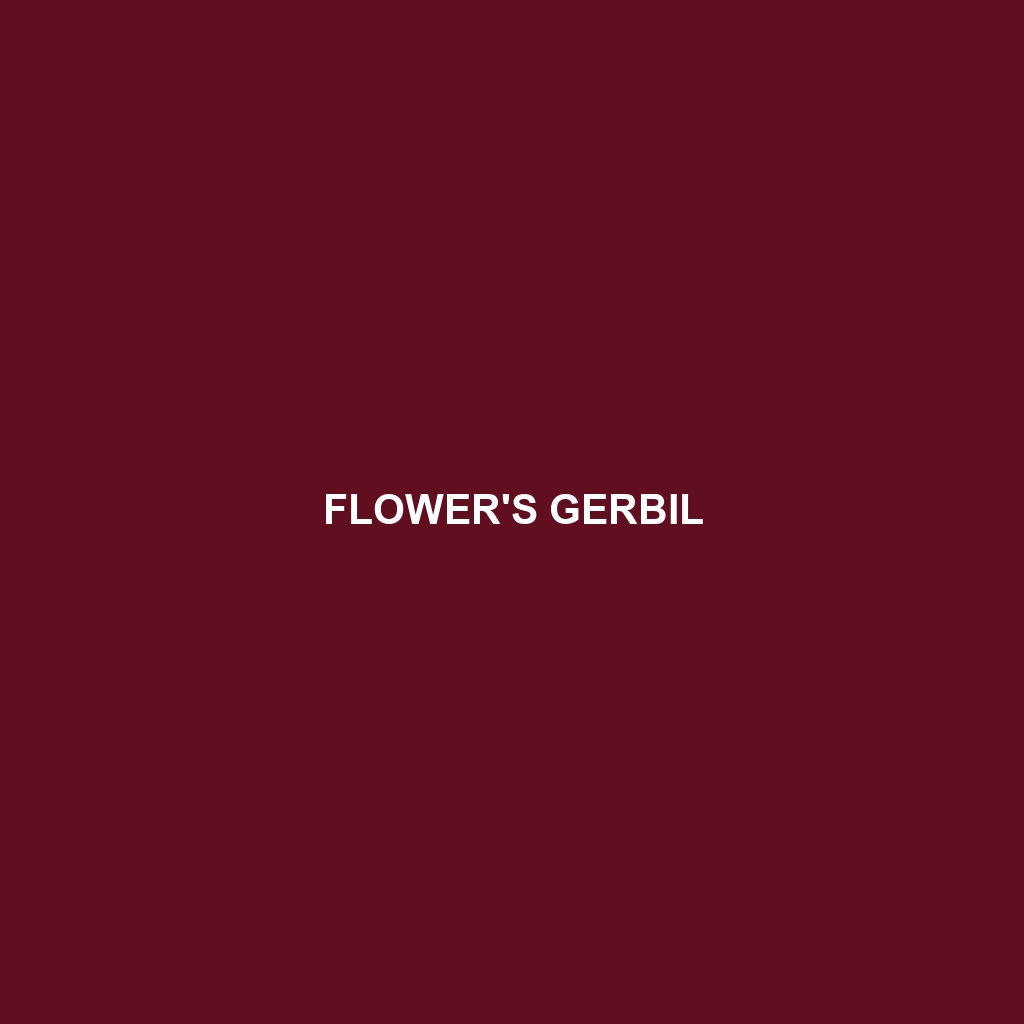Flower’s Gerbil: An Overview
Common Name: Flower’s Gerbil
Scientific Name: Gerbillus floweri
Habitat
The Flower’s Gerbil is primarily found in the arid regions of northwestern Africa, particularly in countries like Morocco and Algeria. This species thrives in sandy deserts and scrublands, where they skillfully navigate through the dry soil and sparse vegetation.
Physical Characteristics
Flower’s Gerbil typically measures about 10 to 12 centimeters in body length, with an additional long bushy tail that can add another 8 to 10 centimeters. Their fur is generally a sandy color, which helps them blend into their desert environment, with lighter underparts. Distinctive features include large round ears and elongated hind limbs, which are adapted for their burrowing lifestyle.
Behavior
These gerbils are primarily nocturnal, displaying increased activity during the cooler nighttime hours. Flower’s Gerbil exhibits social behavior, often living in small colonies. They are known for their impressive burrowing abilities, creating extensive tunnel systems that serve as homes and protection from predators.
Diet
Flower’s Gerbil is granivorous, primarily feeding on seeds, grains, and other plant materials. They have been observed foraging in the early morning and late evening, stockpiling food in their burrows to sustain them through periods of scarcity.
Reproduction
The breeding season for Flower’s Gerbillus typically occurs in spring, with females capable of producing several litters each year. After a gestation period of approximately 25 days, females give birth to 3-7 pups, which are born blind and helpless but grow rapidly. Both parents participate in caring for the young, ensuring their survival in harsh environments.
Conservation Status
The Flower’s Gerbil is currently listed as ‘Least Concern’ by the International Union for Conservation of Nature (IUCN); however, habitat loss due to human activities poses a potential risk to their population in the future.
Interesting Facts
Flower’s Gerbil has a unique adaptation known as ‘water conservation.’ They can extract moisture from their food, allowing them to survive in extremely arid conditions. Furthermore, these gerbils communicate using a range of vocalizations, including squeaks and chirps, which play a vital role in their social interactions.
Role in Ecosystem
As seed dispersers, Flower’s Gerbils play a critical role in their ecosystem by helping to maintain the delicate balance of their desert habitats. Their burrowing activities also aerate the soil, benefiting plant growth and providing shelter for other small creatures.
